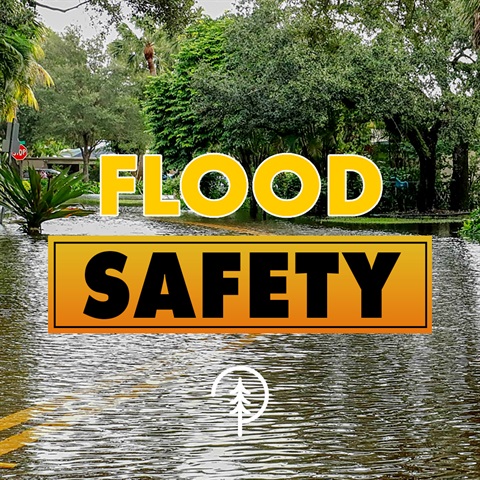Flood Safety

FLOOD SAFETY TIPS
- Avoid Driving: If you don’t have to drive, wait it out. Roads can become dangerous quickly.
- Turn Around, Don’t Drown: Never drive through flooded roadways. Just six inches of moving water can knock you down, and 12 inches can sweep away a small car.
- Avoid Contact with Flood Water: Flood water can contain hazardous substances, animals or downed power lines. Do not walk or swim in the water or drink it.
- Move to Higher Ground: If you are in a low-lying area or near a body of water, move to higher ground immediately.
- Stay Informed: Monitor local news and weather updates for the latest information. Follow Pinecrest and local authorities for updates.
- Secure Your Home: Move valuable items to higher ground, and ensure your home’s drainage systems are clear.
- Check on Neighbors: Especially those who are elderly or may need assistance.
- Prepare an Emergency Kit: Include essentials like water, non-perishable food, medications, and important documents.
- Follow Evacuation Orders: If authorities issue an evacuation order, leave immediately and follow recommended routes.
WHAT TO DO BEFORE, DURING AND AFTER A FLOOD
BEFORE A FLOOD
- Know your risk. Check flood maps and understand your area's flood risk.
- Purchase flood insurance if you live in a high-risk area.
- Create a family emergency plan and practice it regularly.
- Prepare an emergency kit with essential items.
- Secure your home by moving valuables to higher ground and ensuring drainage systems are clear.
DURING A FLOOD
- Stay informed by monitoring local news and weather updates.
- Move to higher ground immediately if you are in a low-lying area.
- Avoid driving, swimming or walking through flood waters.
- Follow evacuation orders from authorities promptly.
AFTER A FLOOD
- Return home only when authorities say it is safe.
- Avoid contact with flood water, which may be contaminated.
- Check for structural damage before entering your home.
- Document any property damage for insurance purposes.
- Clean and disinfect everything that got wet to prevent mold growth.
Resources:
National Weather Service
National Hurricane Center